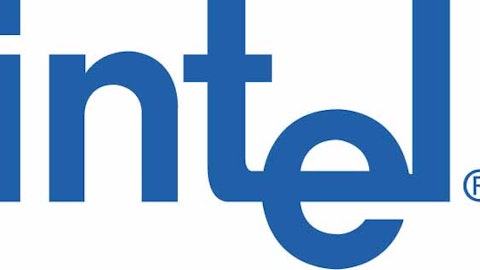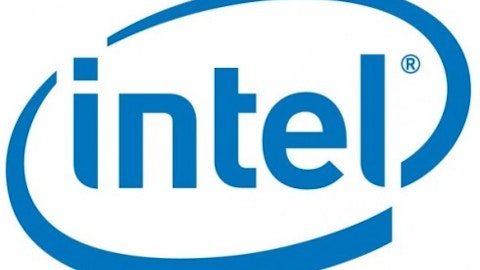Amazon.com, Inc. (NASDAQ:AMZN) presents a credible threat to brick and mortar retailing, and many retail and consumer investors still do not fully appreciate the fact that Amazon.com is the biggest threat to retailers and the most transformative force in recent history.
Eighth largest retailer
Amazon.com, Inc. (NASDAQ:AMZN) became a top 25 retailer in 2010, in 2012 the company moved up the ranks to 11th largest, and with projected 2013 domestic retail sales of $41 billion this would move the company up to ninth on the list according to a report by Keybanc. Amazon.com generates even more in gross merchandise value (estimated around $68 billion) which implies that Amazon.com is right behind Target Corporation (NYSE:TGT) as the fourth largest retailer based on gross merchandise value.

The threat to Target Corporation (NYSE:TGT) from Amazon.com, Inc. (NASDAQ:AMZN) is real, and according to experts, Target’s price matching program is more of a marketing gimmick that will ultimately result in consumer frustration giving them the impression that they will save money. To take advantage of a price matching guarantee, a consumer will have to show identical SKUs, and the fact that many retailers have their own unique SKUs will make it virtually impossible to fulfill this requirement. Target’s price matching guarantee is “unlikely to cause a slowdown in the shift from offline to online sales” according to these analysts.
Retailers fighting back
As mentioned in a previous blog, certain retailers have adapted a price matching guarantee, which is seen as a near term positive. Customers can undertake a 5 minute process to have a sales associate price match Amazon.com, Inc. (NASDAQ:AMZN), which can be easily done from a smartphone. Furthermore, retailers are ramping up investments in their website, IT data-centers, and distribution facilities. Retailers are right to fight for sales and market share against the Amazon.com beast, but an overhang on margins remains as brick and mortar stores clearly have much higher overhead costs to operate their stores.
Competitive advantage since day one
Amazon.com, Inc. (NASDAQ:AMZN) has a unique philosophy that translates to a huge advantage over its competitors. Management often cites that its investment horizon is seven years, which is a longer-term horizon than most companies. Amazon.com is willing to make these larger and longer investments that will drive growth over the long term. In fact, Amazon.com’s first shareholder letter was entitled “It’s all about the long term.”
A three year time horizon puts Amazon.com, Inc. (NASDAQ:AMZN) against a lot of competitors, while a seven year horizon puts it in a league of its own. Since day one, Amazon.com has also focused on three key pillars: low price, broad selection, quick delivery.
Largest ‘showrooming’ target fighting back, but will it last?
A study has shown that shoppers are more likely to purchase a product from Amazon.com, Inc. (NASDAQ:AMZN) after seeing it first hand inside a Bed Bath & Beyond Inc. (NASDAQ:BBBY), a concept known as ‘showrooming.’ Shoppers can use a smartphone to scan a product barcode and instantly purchase the product online from Amazon.com.
Bed Bath & Beyond Inc. (NASDAQ:BBBY) has been fighting back by offering coupons which put the prices on par with Amazon.com, Inc. (NASDAQ:AMZN). Analysts were initially optimistic with Bernstein saying that gross margins can beat expectations for the company’s first quarter 2013 results as a result of an aggressive couponing campaign.
The company later went on to report a first quarter EPS of $0.93, in line with the consensus estimate. Bed Bath & Beyond Inc. (NASDAQ:BBBY) might have dodged a bullet on this quarter, but investors have to wonder how long the company can survive off coupons and other promotions, which make some of their products nearly 15% less expensive than on Amazon.com, Inc. (NASDAQ:AMZN).
A strategy relying on coupons weighs on the company’s margins and can limit profit upside. Investors should keep a close watch on future earnings and be ready to sell shares at the first sign of trouble.
Conclusion
Online shopping continues to gain popularity to this day as Amazon.com, Inc. (NASDAQ:AMZN) has streamlined the shopping experience to make it easy and convenient with a product selection equal to that of virtually every big box retailer.
Personally, I believe that investors should stay clear and avoid investing in retailers that compete directly with Amazon.com, as it’s possible that nearly every retailer could feel some sort of effect from Amazon in the coming years as companies (such as Bed Bath & Beyond Inc. (NASDAQ:BBBY)) can successfully fight off the threat for the coming quarters, but can’t sustain the battle long term. There is a reason why Amazon.com grew its market share from just 1% in 2004 to where it stands today, and Amazon.com, Inc. (NASDAQ:AMZN) still has incredible growth trajectory for many years to come.
Jayson Derrick has no position in any stocks mentioned. The Motley Fool recommends Amazon.com and Bed Bath & Beyond. The Motley Fool owns shares of Amazon.com.
The article Amazon: Big and Getting Bigger originally appeared on Fool.com.
Copyright © 1995 – 2013 The Motley Fool, LLC. All rights reserved. The Motley Fool has a disclosure policy.





